| Dec.
20, 2003:
I glued
a strip below the rear window opening to complete the upper part of the
back door panel, and another thin one at the skirt for the proper panel
profile.
|
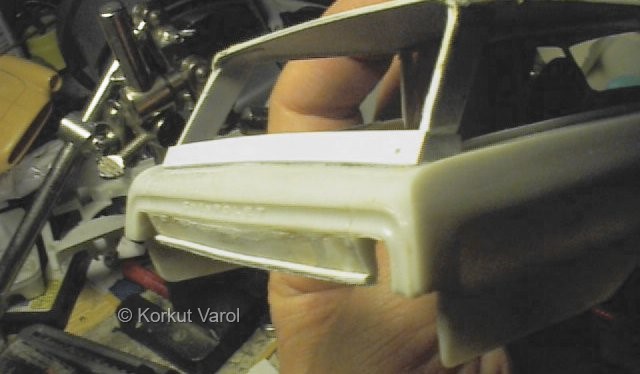
|
| I
applied putty on the glued strips and on the upper parts of the rear
fenders,
because the sedan version has a downward-sloping sectional profile from
the outer edge towards the inside. Note that I have changed the strip
at
the lower edge of the rear window with a wedge shaped one (noticeable
at
the inner view of the left window opening), to keep the opening lower
edge
horizontal. |
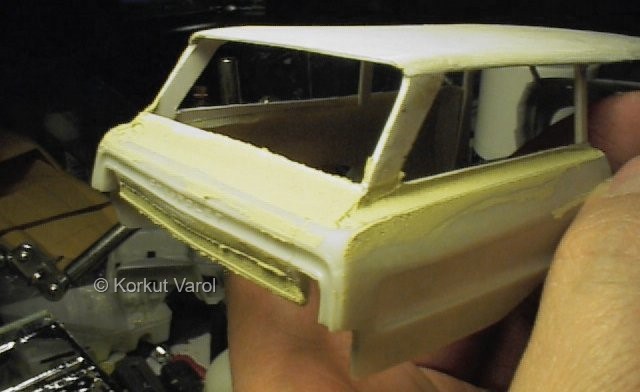
|
| Dec.
21, 2003:
Jumping
to another branch, I drilled the cast-in chrome headlamps. I will put
in
scratchbuilt reflectors and lenses.
|
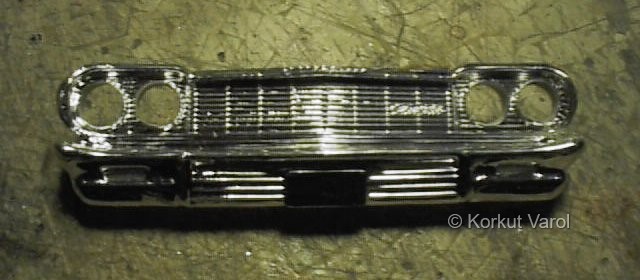
|
| Do
you see how bad the front chrome is? It is as comes with the kit! That
scraped portion is the result of rubbing my fingertip... I sanded the
bad
portions as in the below pic, and covered with BMF. Looks much better
now.
Didn't bother too much with going to extremes because the cars surely
did
not have a showroom quality bumpers! |
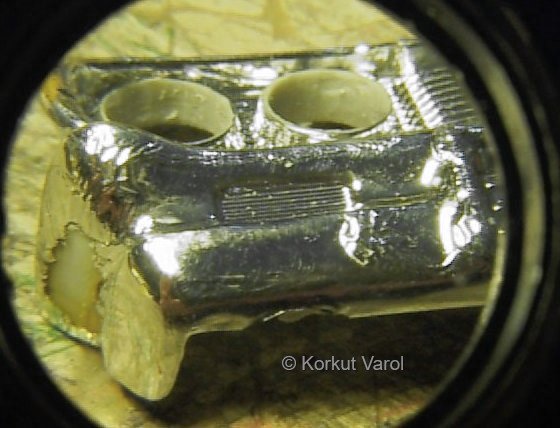
|
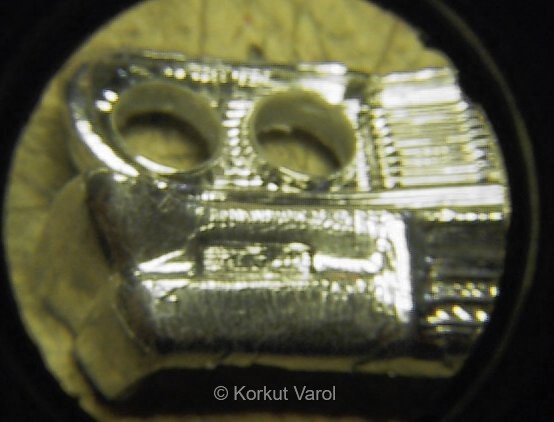
|
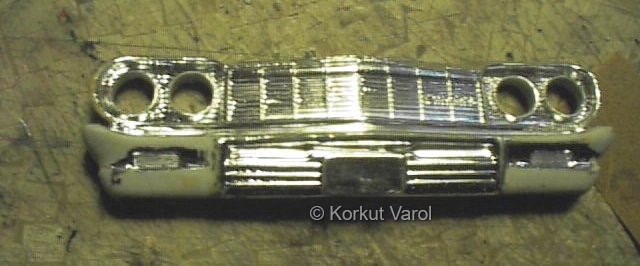
|
| Dec.
24, 2003:
Now
to the front door hinging. I prepared the hinge arms from paper clip
wire
and the bearing from styrene sheets as shown.
|
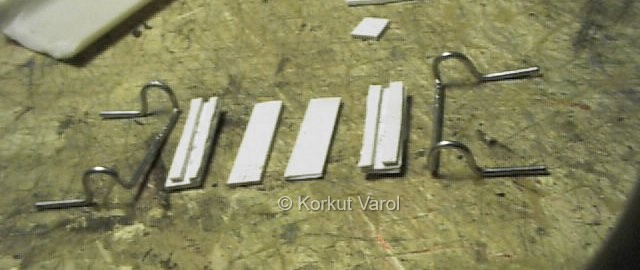
|
| Here
is the assembled views. |

|
| But
I made a mistake and the hinge arms were too wide apart, when the
mating
blocks were installed, they proved to be longer than the door height!
So
I dismantled the members, manufactured shorter hinge arms and shortened
the housings accordingly. With the mating blocks, the assembly looks
like
this. |
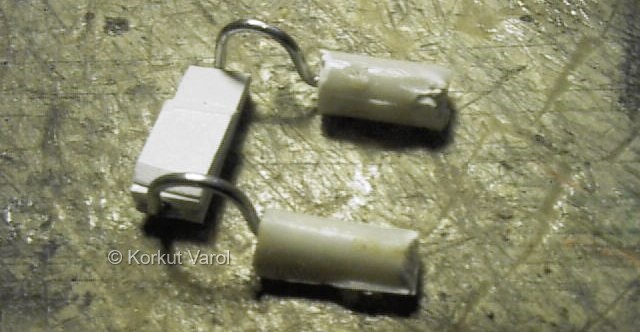
|
| Dec.
25, 2003:
I glued
the housing and arms to the inside of the fender, by testing the
opening.
|
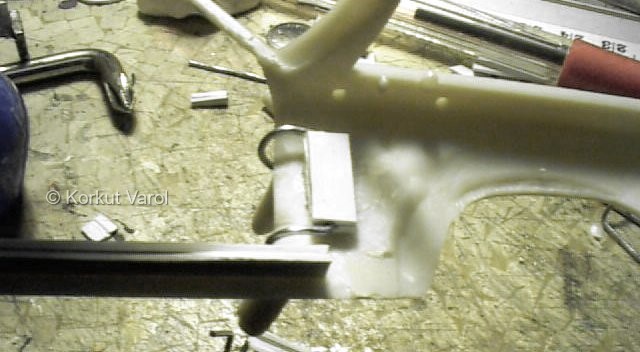
|
| Then
I put the door in place, fixed it on the outside with masking tape, and
glued the mating blocks on the inside of the door. |
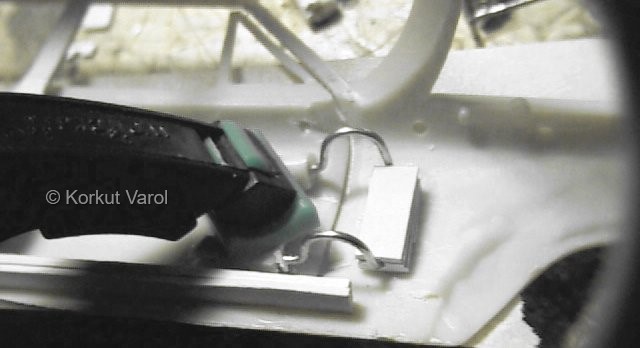
|
| The
door now opens and closes properly. The good point in constructing like
this is, I can easily take out the door anytime I want. |
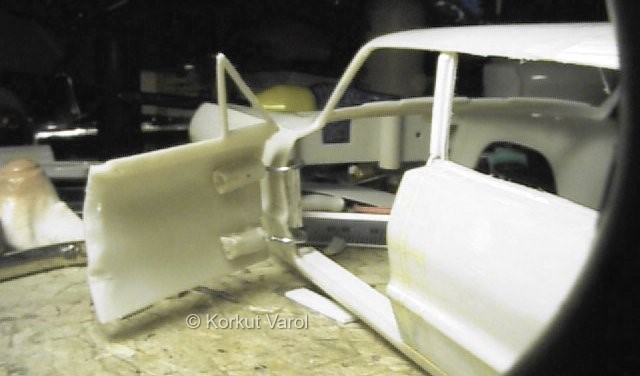
|
| The
right front door was done in the same manner, and shown in the right
pic. |
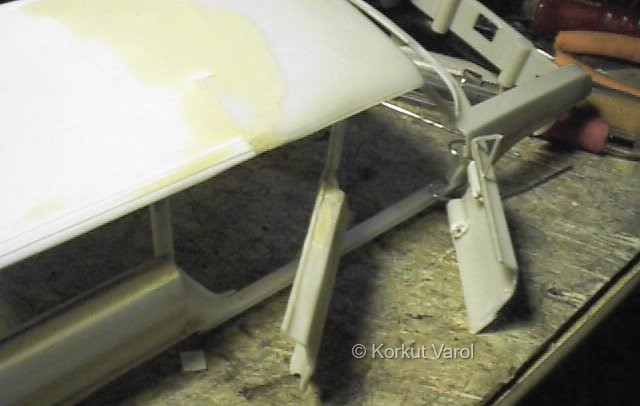
|
| I
cut out recesses in the sides of the chassis panel so that the the
parts
I added on the body would fit in. |
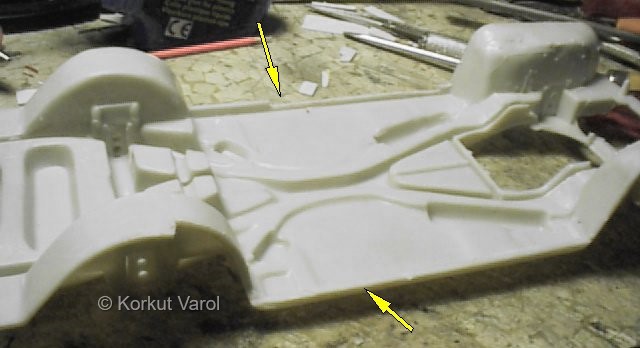
|
| Dec.
27, 2003:
Forming
the inside panel of the rear door.
I
cut a styrene sheet to fit in the door void, and to rest on the tiny
flanges
of the B and C posts.
|
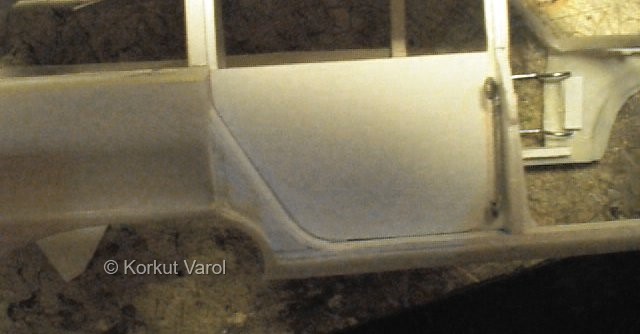
|
| The
most complicated part of manufacturing the inner panels of the door is
construction of the region (that you see purple in the pic) mating
parts
on the door. So I decided to take an easy way and form the region with
steel putty. To prevent sticking to the body, I covered the region with
Humbrol Maskol. |
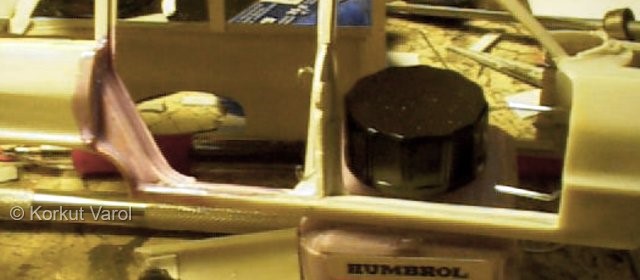
|
| I
put the door inner panel in place, fixed it with masking tape from
behind,
and also put the door outer door in place too. Then I kneaded the steel
putty, put it inside the door panel and closed the outer door panel
over
the internal one. The putty spread in the cavities between the door and
body panels. |
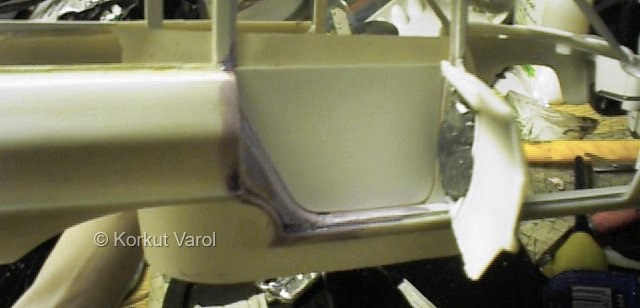
|
| You
see where I put the putty and how it cured. The critical region was
done
by the putty, and the remaining gaps I will fill with normal putty to
flash
the surfaces. Then I removed the Maskol from the body. |
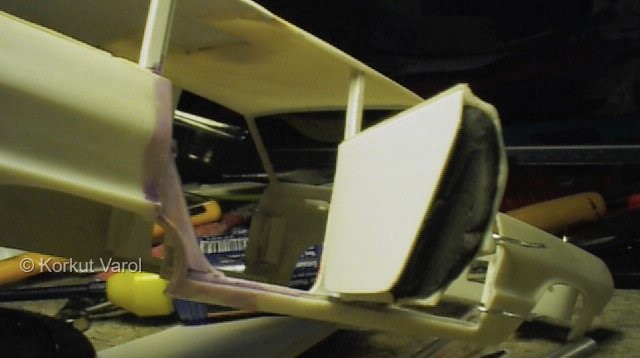
|
| Dec.
28, 2003:
Forming
the inside panel of the front door.
I
tailored a styrene sheet to fit in the left front door void and formed
the bottom panel too.
|
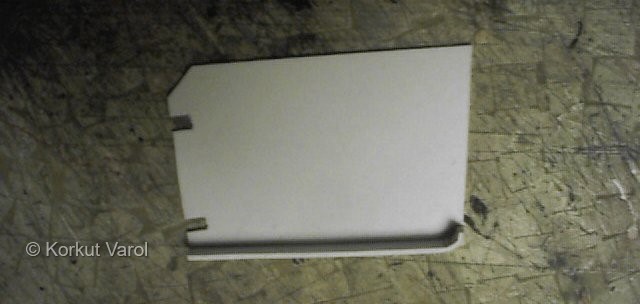
|
| I
put the door in place and glued the outer and inner panels right there,
to ensure a good fit. |

|
| I
cut the lock panel of the door, put a bent pin and fixed it with CA
glue.
You will see much more of the door lock on the next page. |
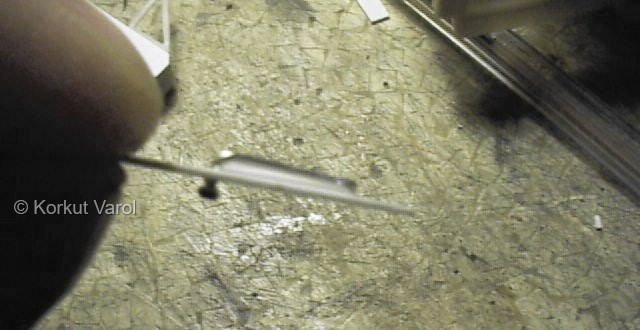
|
| I
prepared the window frame from brass wire, hammered and filed flat. The
corner part is soldered, because the brass could not be bent that
sharp.
The lower part is shaped to fit in the door panel. |
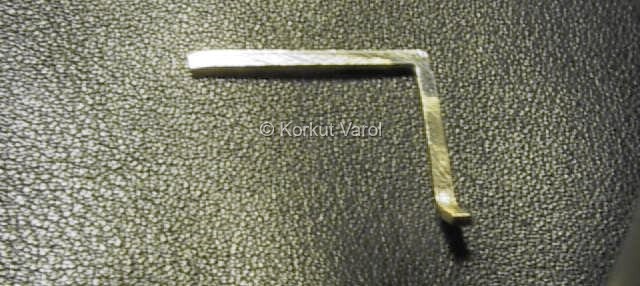
|
| I
had to shave more plastic from the door panel to make a good fit of the
brass and the plastic. I joined them with epoxy glue. |
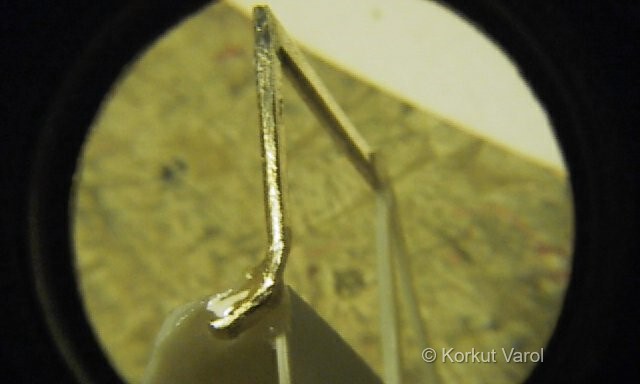
|
| Here
is the joined door. |
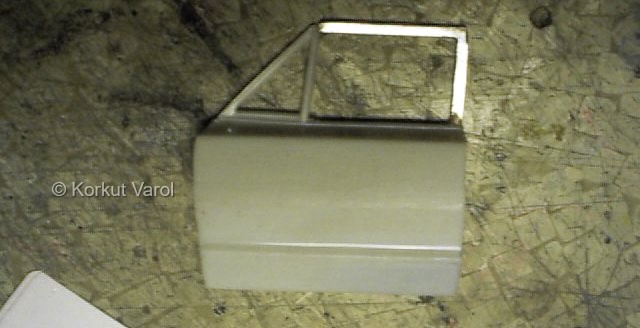
|
|
|
|
|

|
 .. ..
|



